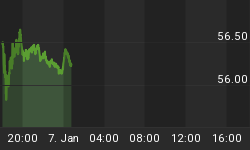Amazon is reportedly in talks to team up with Simon Property Group, the biggest U.S. mall owner, to convert bankrupt megastores into fulfillment centers.
Wall Street Journal sources claim that the two companies are in talks to either step into empty JC Penney and Sears stores or else buy locations that are still in use.
Simon Property Group malls have 63 JCPenney stores and 11 Sears stores across the country--so there’s a fair amount from which to choose.
As for Amazon, whose business is blooming during the pandemic, having fulfillment space close to urban areas would benefit its end-game delivery strategy.
The pandemic has put pressure on many retail stores, leading to the rise of the dedicated fulfillment centers, otherwise known as “dark stores”. It started with grocery stores and has expanded to others.
Bed Bath & Beyond announced in April that roughly 25% of its stores in the U.S. and Canada would be turned into fulfillment centers--temporarily, they hope. A number of fashion brands are also converting their stores to fulfillment centers to provide faster deliveries.
Crew and Neiman Marcus, two more pandemic victims, both filed for bankruptcy.
In mid-May, JCPenney filed for Chapter 11 bankruptcy protection and started closing its stores. Jeans maker True Religion did the same. Sears Holdings filed for Chapter 11 bankruptcy in 2018...and the list goes on.
In 2017, retailers shuttered a record-breaking 8,000 stores or 102 million square feet of store space. The following year proved even worse, with another 155 million square feet of space closing down.
The staggering rate of store closures that rocked the retail industry continued in 2019, with retailers setting a new record for store closings, a total of just above 9,000.
As for this year, experts predict that U.S. retailers could announce between 20,000 and 25,000 closures. More than half of those are situated in America’s malls.
Even those that are financially stable are looking to downsize their brick-and-mortar store presence, which is not suited well for shopping malls and building operators, even without a pandemic.
Several luxury brands are suing the landlords hoping to break their leases early. The Italian fashion brand Valentino is suing to break its lease in NYC’s Fifth Avenue early. Victoria’s Secret is also seeking to annul one of its largest and most expensive retail leases. (It pays over $10 million a year in rent for its Manhattan’s Herald Square store).
On the other side, some landlords are suing tenants, too. In June, Simon Property Group itself sued the Gap for three months of unpaid rent that totaled nearly $66 million for nearly 400 locations. So, Amazon is looking like a much better renter.
As GAP followed with its own suit seeking rent relief, Simon increased the lawsuit to $107 million in overdue rent. GAP is also involved in litigation with Brookfield Properties and other landlords.
While missing the lease payments or abandoning the leases altogether might be a way out for retailers, landlords are definitely feeling the consequences. Bloomberg reported last month that CBL & Associates Properties Inc., the owner of more than 100 shopping centers across the country, is preparing its own bankruptcy filing, the first such since 2009.
Simon Property Group, which was set to purchase rival Taubman early this year in a $3.6-billion deal but pulled out, reported that its profits fell 20.2% during the first quarter.
So, as far as commercial real estate landlords are concerned--and especially those dealing with retail--fulfillment centers could be a new lease on life.
By Josh Owens for Safehaven.com
More Top Reads From Safehaven.com:
















